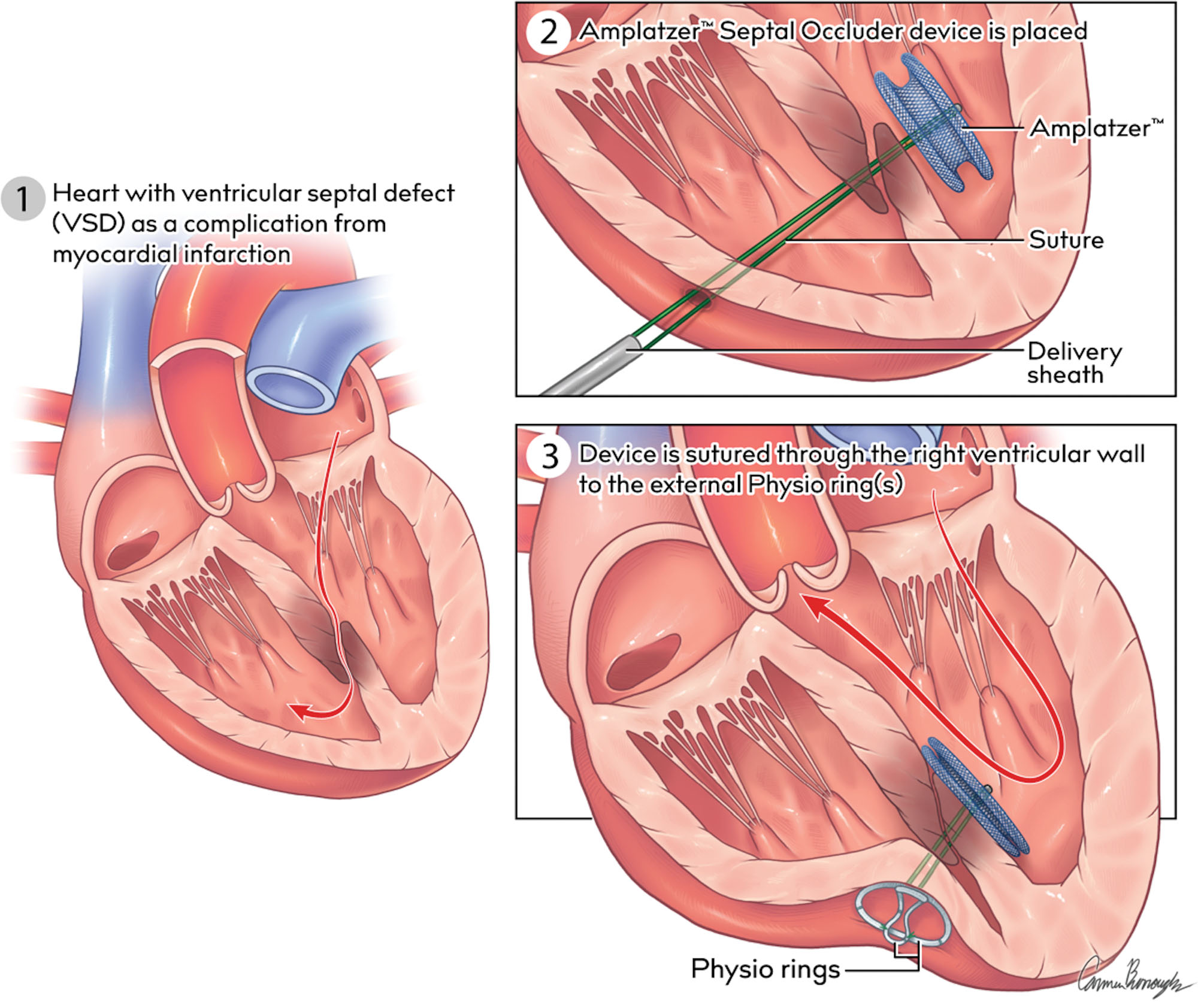
A ventricular septal defect (VSD) is an abnormal communication between the left and right ventricle through a defect in the septal wall. In most cases, this will cause oxygenated blood to flow from the left ventricle into the right ventricle and mix with deoxygenated blood. If a VSD results from an acute myocardial infarction (AMI), it is also referred to as a ventricular septal rupture (VSR).
Ventricular septal rupture (VSR) is a rare but lethal complication of acute myocardial infarction (AMI). As acute reperfusion strategies for AMI have evolved, VSR has become increasingly rare and is identified earlier in the post-MI course. Despite significant improvements over the last two decades in overall mortality for patients with AMI, the outcome of patients who develop VSR remains poor.
A small ventricular septal defect may cause no problems, and many small VSDs close on their own. Larger VSDs need surgical repair early in life to prevent complications.
Signs and symptoms of serious heart defects often appear during the first few days, weeks or months of a child's life.
Ventricular septal defect symptoms in a baby may include:
- Poor eating, failure to thrive
- Fast breathing or breathlessness
- Easy tiring
Chest radiography, magnetic resonance imaging (MRI), and electrocardiography (ECG) may all provide useful information in the workup of a VSD. Although cardiac catheterization was a standard part of the evaluation in the past, detailed echocardiography is now the diagnostic imaging modality of choice
BestHeartSurgery is a comprehensive information portal that gives both the common man and medical professionals.

